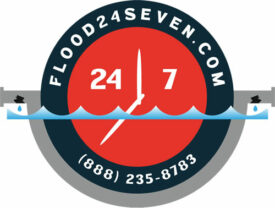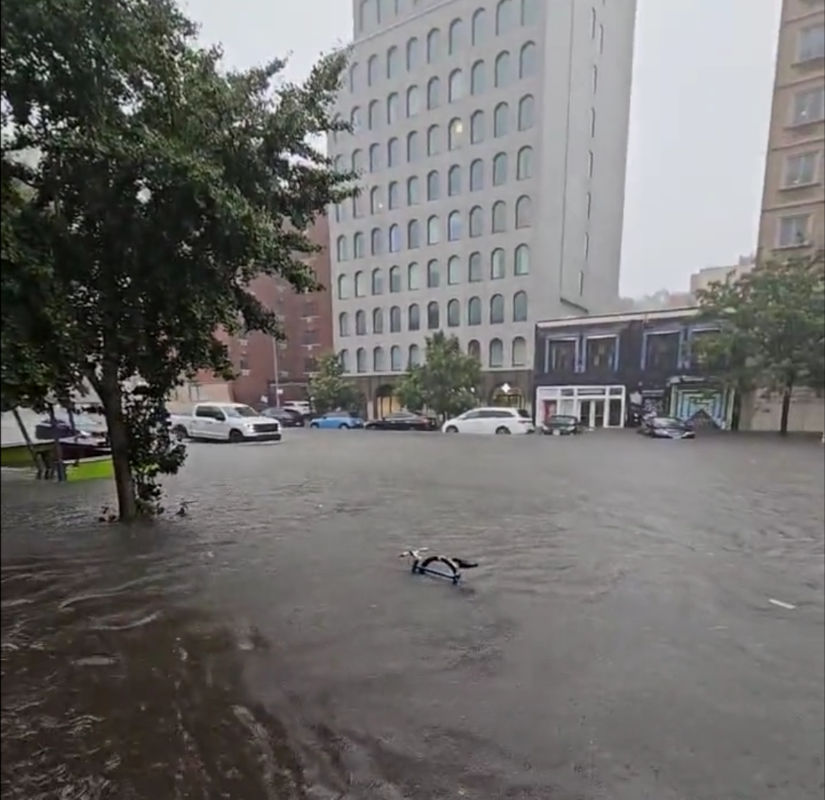By the end of a single day, historic rainfall levels had affected most parts of the city with Brooklyn and Queens experiencing the most impact.
The city’s Environmental Protection department issued an advisory for most of the area’s waterways – due to potential sewage runoff. New York City’s sewage system can handle approximately 1.75 inches of rain an hour. However, as record-breaking rain fell, weather stations located in Central Park and many parts of Queens were recording more than 2 inches of rain per hour. Areas of Brooklyn were receiving nearly 3 inches per hour.
The overall tends to flow toward waterways which can often contains contaminants and more than just rain. The flooding can overwhelm sewers and wastewater treatment facilities which causes untreated polluted water to flow directly into rivers and creeks. Many people reported sewage backing up into lower level apartments, which were also flooding from the streets.
Transportation authorities attempted to avoid service interruptions, but due to uncontrollable flooding and overflow, there were serious interupptions and shut downs. Many subway lines were taken out of service or delayed due to flooding throughout the system.
Schools were open as normal for the most part, but many students never made it to class. Some of them were stuck on their way in. The Department of Education reported attendance at 77% — which is well below normal rates. The students who did make it to school had to figure out how they would get home through the floodwaters.
Have you experienced sewage backup, residential flooding, or closure of your business due to flooding in New York City? Call Flood 24/7 for flood remediation and sewage remediation.
Brooklyn Flooding

Brooklyn was considered the epicenter of record-breaking rainfall as streets and subways flooded under more than a half-foot of rain. The typical rain amount for an entire month feel in just a matter of hours. That type of rain event is expected only once in 100 years according to the National Weather Service. The governor of New York called it a “… dangerous life-threatening storm.”
Brooklyn’s Stormwater Resiliency Plan calls for adding infrastructure improvements through 2031. In the meantime, a full three days after record rainfall, mud and muck still cover some basement floors and crawl spaces. As people are still cleaning and trying to get back to normal, word comes that the rainfall in Central Brooklyn was more than twice the average of September, according to the National Weather Service.
The Brooklyn Chamber of Commerce spent time evaluating damage to businesses throughout Brooklyn. They logged more than 130 businesses that were significantly damaged and estimate the number is actually much higher. They also admit that while help may be available for businesses to get back on track, the process can take a while.
In addition to businesses and homes being flooded, transportation routes were severely disrupted right as commuters were making their way to work. The flooding affect buses, trains, and flights and even major roadways experienced flooding. Vehicles were stranded in seemingly river-like conditions on the Belt Parkway, Prospect Park Expressway and Brooklyn-Queens Expressway.
Queens Flooding
Described as the most significant rainfall of the year in New York City, residents throughout Queens were subjected to hazardous road conditions. Highways were closed unexpectedly, public transportation was limited, and many residential areas experienced significant flooding. Some schools made the decision to close despite the state deciding to keep schools open.
The rain was from remnants of Tropical Storm Ophelia, and it flooded streets in the borough from Northeastern Queens to the tip of the Rockaway peninsula. As basement apartments were flooded, commutes of Queens residents, which also included thousands of students, were severely disrupted or halted altogether. Subway schedules were impacted with delays and cancelations. Flash flood warnings were issued and Terminal A at LaGuardia was closed.
If you have experienced sewage backup, residential flooding, or closure of your business due to flooding in New York City – Flood 24/7 can help with professional flood remediation and sewage remediation services.
Flood 24/7 has comprehensive restoration services for residential and commercial properties.
Flood Remediation First Steps
If you have experienced flooding, sewage backup, or property damage from the overflow, follow these guidelines and call for professional help.
- Await Official Clearance: Do not enter the area until local authorities have officially declared it safe. They will assess structural integrity and potential hazards before allowing residents and businesses to return.
- Dress Adequately: Ensure you are wearing protective gear, including rubber boots, gloves, and a mask. These items are essential to shield yourself from potential contaminants found in floodwater.
- Document the Damage: Capture photos or videos of the flood-damaged areas. This documentation is crucial for your insurance claim and will assist in the assessment process.
- Evaluate the Extent of Damage: Carefully assess the damage caused by the flood. Be vigilant about sagging ceilings or walls, as they may pose a collapse risk.
- Remove Stagnant Water: Initiate the removal of any remaining water using a pump, wet/dry vacuum, or by enlisting professional water removal services. Promote drying by opening windows and doors to facilitate airflow.
- Thorough Cleaning and Disinfection: Employ a bleach solution (mix 1 cup of bleach with 5 gallons of water) or other disinfectants to meticulously clean and disinfect all surfaces that have come into contact with floodwater.
- Dispose of Contaminated Items: Discard any items that cannot be effectively cleaned or disinfected. This may include mattresses, carpets, upholstered furniture, and perishable food items. Make sure to keep a record of these items for your records.
- Dry Out Your Residence: Eliminate all moisture to prevent mold growth. Utilize a dehumidifier, fans, and open windows to expedite the drying process in affected areas.
- Seek Professional Assistance: If the damage is extensive or if you are uncertain about any aspect of the cleanup process, it is advisable to consider professional residential or commercial remediation services.
- Prioritize Safety: Your top priority when returning to a flooded home should be safety. Take your time, follow these steps diligently, and consider consulting local authorities or professionals to ensure a secure and successful recovery.
Remember: If you have been affected by flooding, call Flood24Seven 888-235-8783. It is essential to act quickly and prevent further damage your home or commercial property.

